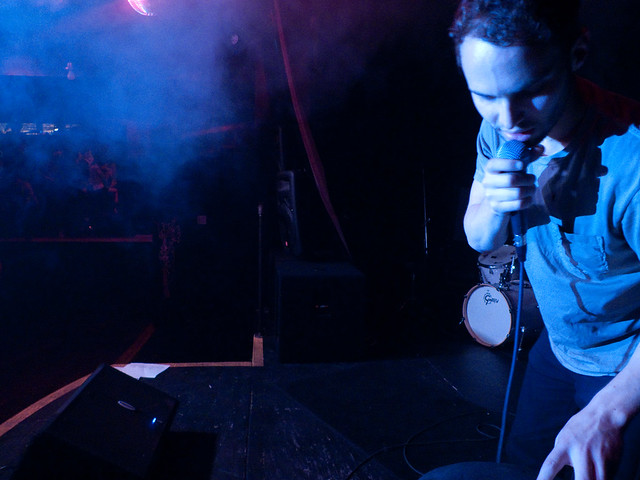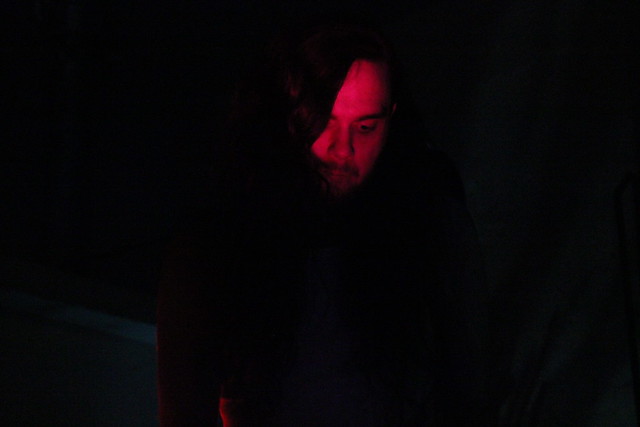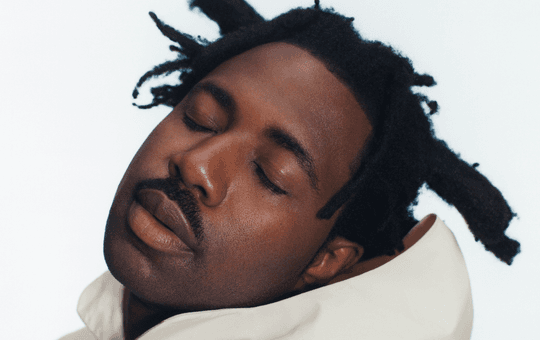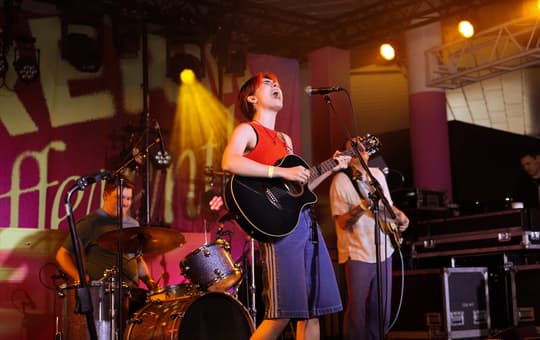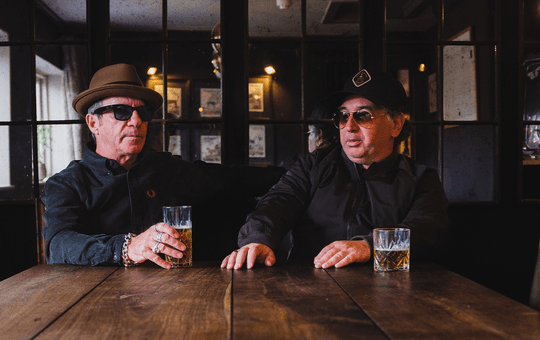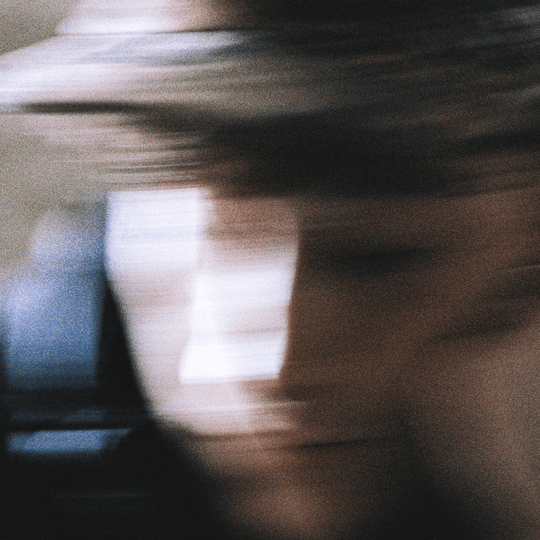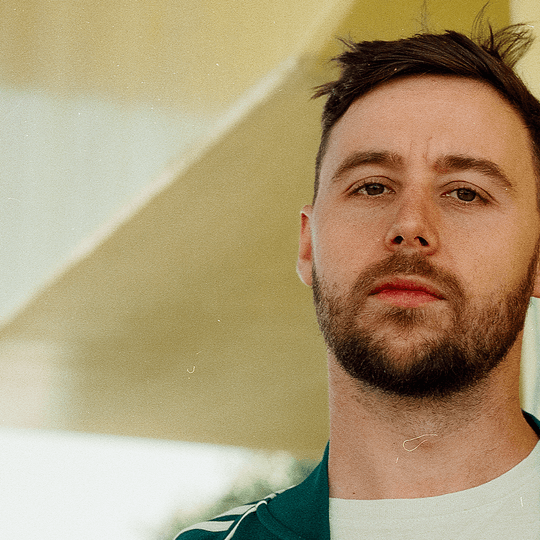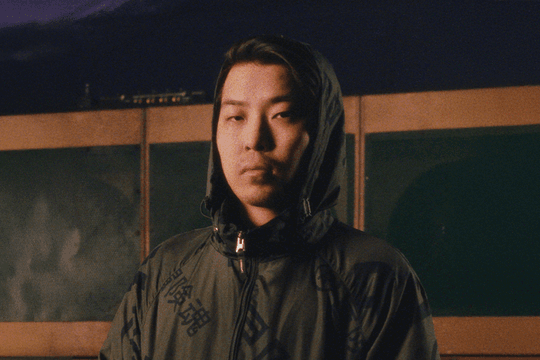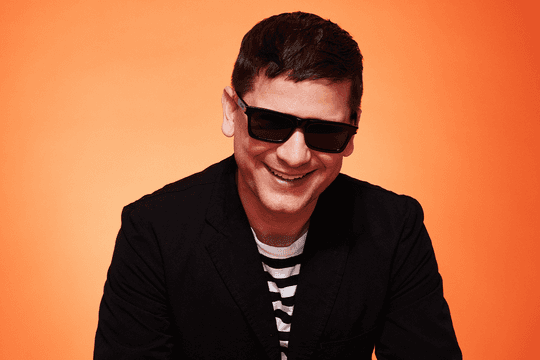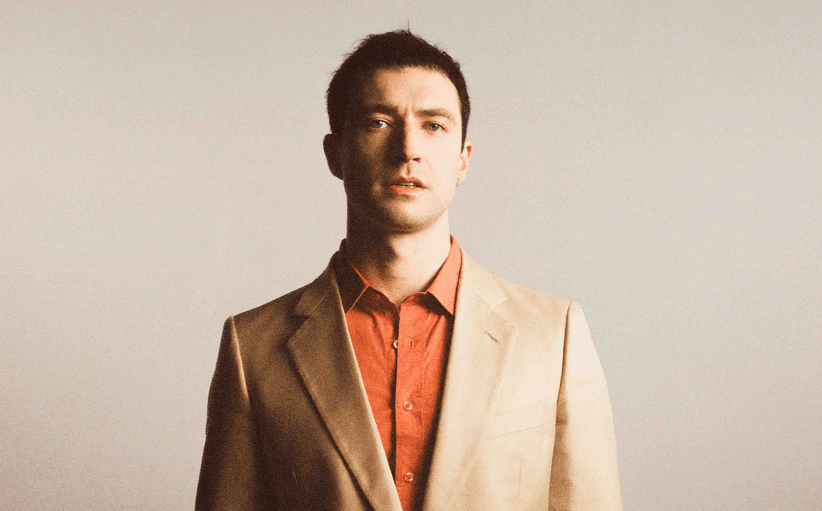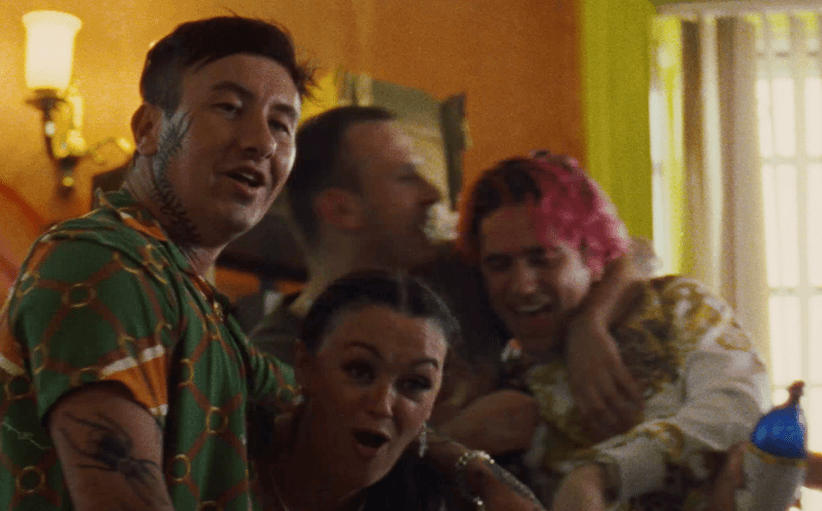Borne into the 90s [pt.1]
It’s well known that in recent decades, pop music has been increasingly partial to revisiting the sights and sounds of its past. Independent artists and labels, particularly, have led the way in dusting off forgotten styles from the last decade but one and making them cool again, with or without mixing in some degree of irony. The phenomenon is described by music critic Simon Reynolds in his latest book, Retromania: Pop Culture’s Addiction to its Own Past, in terms of revivals, repetitions and reconstructions, each focusing on a single decade. In the 00s, the post-punk of the late 70s and early 80s returned, followed by the styles that seem to scream 80s the most: electro disco and synthpop. As that decade drew to a close, a number of artists were exploring the evocatively everyday corners of 80s middle-of-the-road background pop through the lens of lo-fi, giving rise to the microgenres named chillwave and hypnagogic pop. Reynolds has suggested a number of times that the wheels of retromania will soon be rolling into the 90s, a decade whose induction into the archives of vintage appeal is due any day now.
Reynolds has suggested a number of times that the wheels of retromania will soon be rolling into the 90s, a decade whose induction into the archives of vintage appeal is due any day now.
And yes, a number of significant indie releases this year have shown traits – sounds, rhythms, production styles – that were previously unique to certain areas of late 80s and early-to-mid 90s pop music. Rather than engaging in a whole-scale pastiche of some twenty-year-old album, however, artists seem to be taking a more complicated approach, making unlikely amalgamations of elements, digging in unexpected areas and twisting their reference points into something that exceeds pastiche and becomes more something original. Though the feel of the era is subtly called forth, the overall effect is less that of an old box of dulled photos taken down from the loft, than of a strange, impressionistic and yet somehow convincing parallel world that could only have been concocted in the present. Perhaps dressing up as the past is no longer as clever and unique as it once seemed.
But apart from anything else, it’s difficult to pin the 90s down to having a singular characteristic sound. The 80s have largely been associated with brash, artificial and bombastic pop bathed in synths and reverb, despite the fact that it was a highly pluralistic time for pop music, seeing it diverge into dance, hip hop, punk, indie and adult contemporary traditions. By the late 80s and early 90s, pop music consisted of so many different streams that there is no one sound or mood that springs to mind as defining the era. A 90s revival could be a revival of grunge, gangster rap, Brit pop, jungle, IDM, trip hop, jungle, acid jazz, riot grrrl, trance, ragga or many more. What’s more, pop music in the early 90s differed across the Atlantic more than it does today. In the charts, America tended to prefer soulful or streetwise R&B, rap and songstresses to the often cartoonish dance pop, boy / girl bands and one-hit wonders popular in Europe. Elsewhere, stylistic trends in rock and dance were relatively limited to a single locale, since it was still early days for the high-speed cultural communication the web enabled.
However, artists seem to be digging in unexpected areas and twisting their reference points into something that exceeds pastiche and becomes more something original.
Any would-be 90s revivalist, then, would have to be somewhat selective. So what do the 90s have to offer the 10s? Perhaps they offer now what they provided then, particularly in the US – a backlash against the falseness and regrettable excess of the previous decade and the reinstatement of a smoother, more sophisticated and more thoughtful form of cool. Much like today, the years around 1990 were a time of economic recession, political revolutions, rebuilding and uncertainty. Like the 80s it revived, the peak hyperactivity and confidence of Western culture circa 2007 now seems tasteless and naïve, and we find ourselves craving something that seems more honest, perhaps something weirder and darker – something that’s new, but that can still speak to us.
Hence the recent tendency toward sincerely hyperemotional, especially the melancholy, in many areas of underground music. Three North American artists stand out in this regard: Autre Ne Veut, d’Eon and How to Dress Well. Besides the deep emotion that they each expose, these three also share connections to that most intimate and soulful of pop genres as it existed at the turn of the 90s – R&B. In the early 90s, R&B was halfway between the bouncy late 80s hip hop funk fusion of the new jack swing style and the slower, softer romancing that characterised R&B later into the decade. One album that symbolises this moment is R. Kelly’s 1992 debut ‘Born Into The 90s’, where the angular, machinic sound of the late 80s is palpably giving way to something gentler, which R. Kelly would fully adopt on his next album, 1993’s hugely successful ’12 Play’. Autre Ne Veut, d’Eon and How to Dress Well each have something of R. Kelly in their singing, be it the grain of his voice or his approach to vocal melody.
There is little that’s gentle about Autre Ne Veut’s music, however. Many critics have noted its similarity to mid-80s pop, namely the epic, hi-tech and fractured studio sound evident on albums such as Hall & Oates’s ‘Big Bam Boom’ (1984), Janet Jackson’s ‘Control’ (1986) and, especially, Scritti Politti’s ‘Cupid & Psyche 85’ (1985). The shift in the sound of pop in the mid 80s was down to technology, much of which was digital. Studios became larger and more complex, and were equipped with the next generation of synthesisers. A new form of sound generation, frequency modulation (or FM) synthesis, became widespread, which allowed a wider palette of tone colours, many of which mimicked acoustic instruments. Alongside them, sample-based synthesis of the sort popularised by the Art of Noise further blurred the line between acoustic and electronic sound sources. Any move from referencing the early 80s to referencing the mid-to-late 80s would be likely to cross into this world of more complicated and heavily processed synth tones, which is just what Autre Ne Veut does. His self-titled first album, which came out on the retrophile Olde English Spelling Bee label a year ago, is teeming with strange synth noises, from mid-range squelches and fingerlessly plucked digital bass to sparkling bells and rasping chords echoing in non-existent spaces. This technicolor world of synthesiser hue is so multifarious that it wouldn’t be inappropriate, now or back in the 80s, to call it ‘post-electro’ in recognition of how it supersedes a more basic synth palette.
In a more general vein, Autre Ne Veut’s closest kindred spirit in the late 80s might be Terence Trent d’Arby, whose bizarre brand of prog R&B resonates with Autre Ne Veut’s own, both in sound and spirit. D’Arby’s first album ‘Introducing the Hardline According to Terence Trent d’Arby’ appeared in 1987, and its single Wishing Well topped the US charts the following year. Listening to Wishing Well, it’s not difficult to recognise Autre Ne Veut’s singing style, falsetto and penchant for weird timbres cutting in and out. On the same album, Let’s Go Forward has the mantras, twinkling chords and desperate wailing of ANV tracks like Demoneyez and Wake Up, while d’Arby’s Sign Your Name has the synth bass, eerie chords, exotic drumloops and multi-tracked octave singing Autre Ne Veut constantly returns to. D’Arby’s later albums were stranger still, favouring powerful percussion trances and a warlike power, much like Soldier on ANV’s debut and his subsequent ‘Body’ EP.
Yet this is where any similarities end. When listening for sound-a-likes, it’s always a good idea to listen to both side by side before a diagnosis of retromania is made. Often there are just as many glaring differences as there are similarities. The first thing that Autre Ne Veut strikes the ears with is the sheer extent of the weirdness that’s put boldly on display. For all the eccentricity or studio magic hurtling around on ‘Introducing the Hardline…’ or ‘Cupid and Psyche 85’, their songs at least hung together in the traditional sense. With Autre Ne Veut, the synths are so strange, the composition so unpredictable and the soul so raw and unrepentantly extravagant that had his music arrived on a record label’s desk in 1987 it would have terrified whoever gave it a go. Autre Ne Veut’s tracks are more collages of off-centre loops and single melodic phrases than R&B songs as we ought to know them. The beats almost never offer regular dance patterns – it’s as if the streetwise grooves of New Jack Swing have been shattered by Autre Ne Veut’s emotional urgency and are lying strewn about like clothes torn away in the heat of passion. The heavy processing of the voice is also shocking, sometimes doubling it up and down the octave as he sings, sometimes squeezing it through some digital mincer, and routinely ventures beyond 80s pop. On both a sonic and spiritual level, this is not just prog pop, it’s genuinely progressive pop.
With Autre Ne Veut, the synths are so strange, the composition so unpredictable and the soul so raw and unrepentantly extravagant that had his music arrived on a record label’s desk in 1987 it would have terrified whoever gave it a go.
Rising to prominence at the same time as Autre ne Veut, d’Eon also uses that broader palette of synth tones, particularly the FM sounds of the widely-used Yamaha DX7 synthesiser, which entered production in 1983 and whose sounds were commonplace in the following years. d’Eon mixes together an increasingly intriguing cocktail of sounds, rhythms and harmonies that can be associated with the late 80s and early 90s. His voice sounds like a curious extrapolation of Phil Collins’s, his command of harmony and an easy groove is considerable, his lyrics are thoughtful and mature, and the mood of his music is usually chilled and contemplative, all of which imparts a vague feel of late 80s adult contemporary pop to his music. Yet much of the time he also seems to be reliving some sort of late 80s house or disco, or 90s R&B or jungle. Though they existed at the same time, these two stylistic areas were practically opposites. Thus by transcending the divisions of the time, d’Eon manages to conjure the era in a strangely holistic sense.
On d’Eon’s relatively obscure early releases such as the album ‘Æon’ (2010), the retro pastiche is more obvious and homogenous. They’re full of genial, well-constructed house numbers that might have come from minor underground records released anywhere between 1985 and 1995 and set at varying degrees of ambient, as well as freer modal improv sessions that often recall the New Age-like Vangelis or Tangerine Dream albums of the time. These continue on ‘Palinopsia’, d’Eon’s debut for Hippos in Tanks, but become more mysterious: Keep the Faith has the cool open-top groove of a R&B or rap single circa 1994-7, but it is realised in the New Jack Swing 80s shades of the Yamaha DX7 (including the widespread bell-like tone that appears in proto-new jack tracks such as Jesse Johnson’s Free World in 1987, or fully-fledged NJS hits like Bobby Brown’s Don’t be Cruel in 1988). As such, it would be unusual to find any sound from the 90s that it actually replicates, let alone a popular one. And yet if you’re looking for it, the nostalgia is tangible.
d’Eon’s strongest and most striking material appears on ‘Darkbloom’, the split LP released with fellow Canadian Grimes earlier this year. His suite of four tracks for the record take in the high-speed syncopations and TR-808 percussion of the more contemporary footwork style from Chicago and conform to the pattern of increasingly heterogeneous, subtle and elusive reference points. The meditative new age jam of Telepathy matches the electronic mood music churned out in the early 90s, which was full of digital imitations of acoustic instruments, but compromises it with a hive of mobile phone interference. This theme of the confidence expressed by the sounds of a bygone age undermined by the noise and doubts of the present is one that has manifested many times recently, especially in the art and music movement dubbed hauntology.
Throughout his half of ‘Darkbloom’, d’Eon also undermines the positivity of his references with the minor or harmonically complex feel, along with the lyrics riding on the rhythmic shakiness of footwork: “You are so… damn… I don’t… I can’t… I don’t know what to say, Why don’t we… damn… how do I… say this… what am I allowed to say?” goes the stuttering refrain of Thousand Mile Trench. Halfway through the next track, Tongues, d’Eon introduces a lazy breakbeat and then adds a rapid tambourine shake, the combination strongly suggesting rap and R&B at the turn of the 90s. After a breakdown that could have come from a mid-90s European dance hit, this develops into a gentle ambient jungle skit reminiscent of late 90s Aphex Twin, although the latter would have baulked at the thought of mixing in the Yamaha bell tones d’Eon employs. Though all this may sound like a hotchpotch overstuffed with un-coordinated stylistic references, the overall result is oddly smooth and coherent.
The final track, Transparency, was released online together with a video and much discussed on blogs. It starts with a distinctive riff whose sound holds a considerable weight of association. The synth preset used is – or is very much like – the Yamaha DX7’s E (standing for ‘electric’) Piano 1 preset, which has a recognisable twinkling sound somewhere between a piano and a vibraphone. This timbre first started to appear in soulful adult pop in the mid 80s, and is used on Sade’s first three albums. It was soon applied as standard to the backing chords on R&B songs, characteristically occurring four times on R. Kelly’s ‘Born In The 90s’, for example. It was also common in the charts – one of the first hits to use the timbre prominently was Phil Collins’s One More Night in 1985. As the 80s progressed, the E Piano 1 sound became more and more commonplace and in 1990 its presence reached a peak, appearing in several number ones that year including Mariah Carey’s ‘Vision of Love’ and Michael Bolton’s ‘How Am I Supposed to Live Without You’. The sound was very common in TV music of the time, particularly teen and adult soap operas. As the 90s wore on the timbre was used less and less, and its last hurrah came in 1998 with Céline Dion’s (note the surname) My Heart Will Go On. Given the timbre’s history and association with kitsch sentimentality, it was surprising to hear it form the main riff of an indie pop song, but it works. Its use on spread chords ending in bluesy ornaments only amplifies the riff’s associations with the turn of the 90s, making it sound like the soundtrack to a gloomy urban TV drama for late teens, circa 1992.
Yet all this is just a resonance or an echo rather than a replica – like many artists today, d’Eon uses the moods of the past to speak to the present, but cannot be reduced to them.
As Transparency continues with crystalline tones and the E organ sound beloved of the jazzier areas of turn-of-the-90s hip hop and Adult Contemporary, it comes off as the archetypical d’Eon track: a strange union of Adult Contemporary from the early 90s, perhaps via TV or other background music (compare with the original 1994 theme tune to the TV series ER) and the R&B, soul, hip hop and dance of the time. You’d have thought the two areas would clash but they don’t. In fact the song bears a close rhythmic resemblance to one famous combination of Adult Contemporary and soulful rap that became one of the 90s defining pop tracks: 2Pac’s Changes. This single, recorded in 1992 and released in 1998, sampled a number one middle-of-the-road piano pop hit from 1986, The Way it Is by Bruce Hornsby and the Range. Applying minor chords rather than the original’s major but retaining its mood of frustrated resignation, Transparency uses just two iterations of both songs’ signature three-part hemiola, and directs its overall movement upwards in pitch instead of the original’s downwards. Elsewhere, d’Eon employs the bright, tinny piano sound Bruce Hornsby helped to popularise. Yet all this is just a resonance or an echo rather than a replica – like many artists today, d’Eon uses the moods of the past to speak to the present, but cannot be reduced to them.
